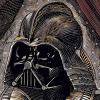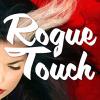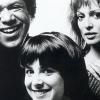The Reader
Harry Crews (1935-2012)
During the first half of the ‘90s I had a job at the late, great Oxford Books. People my age and older remember Oxford, at the time the Atlanta bookstore. Before Barnes & Noble and Borders found their way down here, Oxford was the place to go for a reading fix, some visiting-celebrity-watching and the occasional drunken late-night rendezvous upstairs in the stacks. It was also the prime destination for touring authors with books to plug.

When Harry Crews came to Oxford Books to talk, read and sign, the place was packed. At the time Crews was a resident writer and professor at the University of Florida, and his lectures were legendary, not just for the content but also for Crews’ reputation for showing up at public events with a drink or 12 under his belt. Crews stood up, sporting a fresh Mohawk, and opened with his two new tattoos. One was a hinge that had been inked on the inside of his elbow. How it got there he had no idea, only that he was in Alaska at the time, woke up one morning, and there it was. The other was a shoulder piece with a grinning skull and the words, “How do you like your blue eyed boy Mr. Death” taken from a poem by e.e. cummings.
Before Crews had stepped up that day, I knew I liked his work. By the time he finished and the crowd queued up with books for him to sign, Harry Crews was my hero.
Crews died a couple of weeks ago, at this writing, something I missed in the news until a friend of mine happened to mention it. The news was unsurprising, considering how hard Crews lived, but it was shocking nonetheless. Though Crews is far from a household name, the man’s writing is some of the best work to come out of the South since Faulkner or Crews’ own primary influence, Flannery O’Connor.
I was introduced to Crews by James Kibler while taking his course in the 20th-century American novel. My assigned work was The Hawk Is Dying (recently adapted to film), the story of a man who deals with the shortcomings of his life and the bizarre drowning death of his sister’s autistic son through his feverish obsession with training a red-tailed hawk he has captured. Losing himself in the battle of wills with the bird, the man allows the rest of his life to go to hell while he seeks his redemption in taming something that will not be tamed. It’s a grotesque, absurd novel with a powerful central metaphor, the signature of Crews’ work.
Crews worked Southern Gothic like few others have ever been able to do. Born in Alma, GA, he suffered the white-trash blues that forges all great artists working in the blend of hardship, strangeness and moments of unexpected revelation peculiar to the South. He grew up dirt-poor, jumped into the Marines and served in Korea, went to college on the GI Bill and started writing, married and had a son who died tragically (by drowning). By the time Crews’ first novel, The Gospel Singer, was published in 1968, he had a lifetime of hard knocks and damnation to draw from for the rest of his life.
Crews dealt in the brand of sweaty, masculine fiction of Hemingway or Jim Harrison, skewed by a deep affinity for misfits and the functionally insane. Again and again his characters turn to obsession as a way of powering through personal tragedy, like the protagonist of Car (perhaps his most infamous novel) who engages on a mission to eat an entire automobile a bit of metal at a time, or the hero of Karate Is a Thing of the Spirit, who channels his grief and rage into his mania for martial arts. This is not to say that Crews was all about the repression or redirection of emotion. His novel Scar Lover deals with one of the most tender and often neglected facets of love, the idea that one person can love another so completely that one loves even the other’s deepest flaws.
Harry Crews was a broken master, a man who did battle with demons on a daily basis through drink, excess and words. He was a hard man with a vulnerable core who wrote every sentence and paragraph in his own blood. His writing pulled the plow like few others’, and he will be missed.












comments